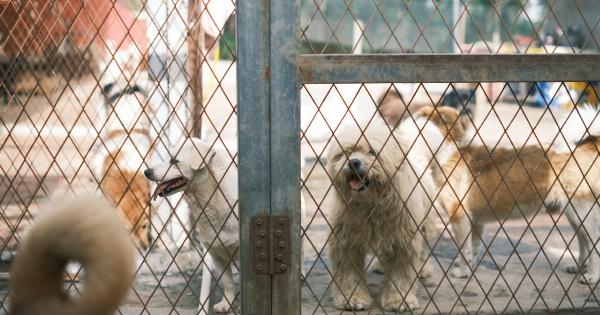Have you ever wished you could talk to your dog and know just what they were thinking or feeling? While we may not have the ability to communicate with our furry friends through language, we can learn to understand their body language and vocal cues.
Dogs communicate primarily through body language, with only about 10% of communication occurring through vocalizations, such as barks, whines, and growls.
Learning to read your dog’s body language can help you understand their emotions, needs, and desires, and can help prevent potential conflicts with other dogs or people.
The Basics of Dog Body Language
Dogs can communicate a wide range of emotions through their body language, including happiness, excitement, fear, anxiety, aggression, and submission. Here are some key body language cues to look for:.
1. Tail Position
A dog’s tail can reveal a lot about their emotional state. A relaxed dog often holds their tail low or at waist height, while an excited dog may hold their tail higher and wag it quickly.
On the other hand, a fearful or anxious dog may hold their tail low and tuck it between their legs, while an aggressive dog may hold their tail high and stiff.
2. Ear Position
A dog’s ears can also provide insight into their emotional state. Relaxed ears may be held out to the sides or back, while fearful or anxious dogs may hold their ears flat against their head.
Alert or aggressive dogs may hold their ears upright and forward.
3. Body Posture
The way a dog holds their body can also indicate their emotional state. Relaxed dogs typically stand or lie with a loose and wiggly posture, with their weight distributed evenly over all four legs.
An anxious or fearful dog may crouch and tense up, while an aggressive dog may stand tall and rigid.
4. Facial Expressions
A dog’s facial expressions can also provide important clues to their emotional state. A relaxed dog may have an open mouth and tongue lolling out, while a fearful dog may pant heavily, lick their lips, or have their mouth tightly closed.
5. Vocalizations
While vocalizations make up only a small part of a dog’s communication, they can still provide important information about their emotional state. A dog’s bark can indicate excitement, fear, or aggression, while growls may indicate dominance or fear.
Whines or moans may be a sign of anxiety or discomfort.
Putting It All Together
While each individual body language cue provides some insight into a dog’s emotional state, it is best to look at the whole picture and consider all the cues together.
For example, a wagging tail alone may indicate excitement, but if paired with a tense body posture, it may indicate aggression or fear.
It is also important to consider the context in which the body language is occurring.
A dog who is wagging their tail and approaching with a relaxed posture at the dog park may be friendly and want to play, but if the same dog is doing the same thing while protecting their food bowl or toys, they may be showing aggression or possessiveness.
Testing Your Ability to Interpret Dog Body Language
Now that you have a better understanding of dog body language, it’s time to test your skills. Below are a series of photos of different dogs in various emotional states.
Can you correctly identify each dog’s emotional state based on their body language? (Answers are at the bottom of the article.).

Photo 1: This dog’s tail is held high and their body posture is stiff. What is this dog’s emotional state?.

Photo 2: This dog’s tail is held at waist height and their body posture is loose and relaxed. What is this dog’s emotional state?.

Photo 3: This dog has their ears flat against their head. What is this dog’s emotional state?.

Photo 4: This dog has an open mouth and their tongue is lolling out. What is this dog’s emotional state?.

Photo 5: This dog has a tense body posture and their ears are upright. What is this dog’s emotional state?.
Conclusion
Interpreting dog body language can take time and practice, but it is an important skill for all dog owners to develop.
By paying attention to your dog’s body language and vocal cues, you can better understand their needs and emotions, and provide them with the appropriate care and attention they deserve.
Answers to Photo Quiz
Photo 1: This dog may be showing aggression or fear.
Photo 2: This dog is most likely relaxed and content.
Photo 3: This dog is likely fearful or anxious.
Photo 4: This dog is likely relaxed and content.
Photo 5: This dog may be showing aggression or dominance.






























